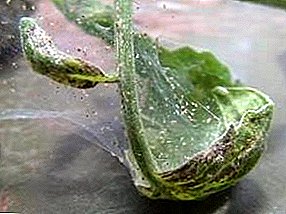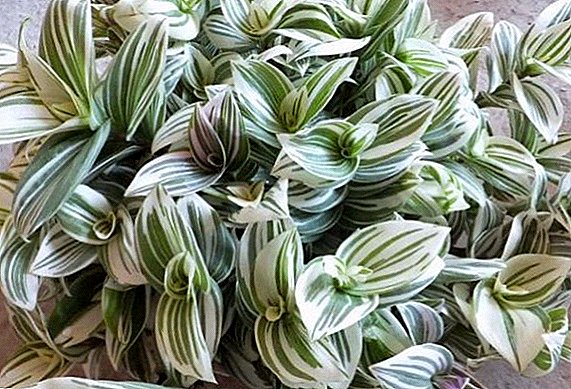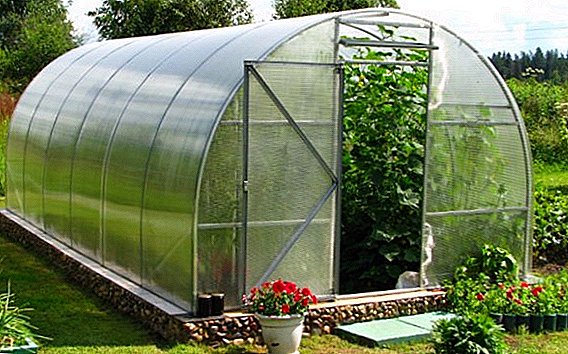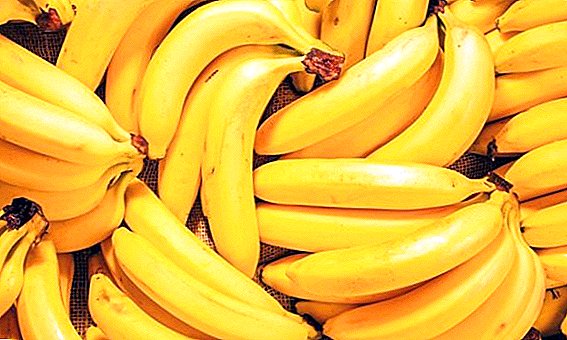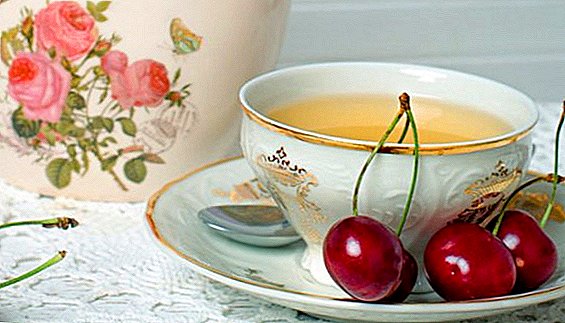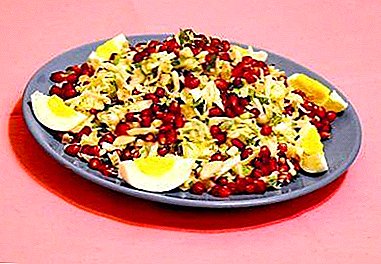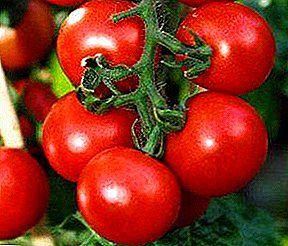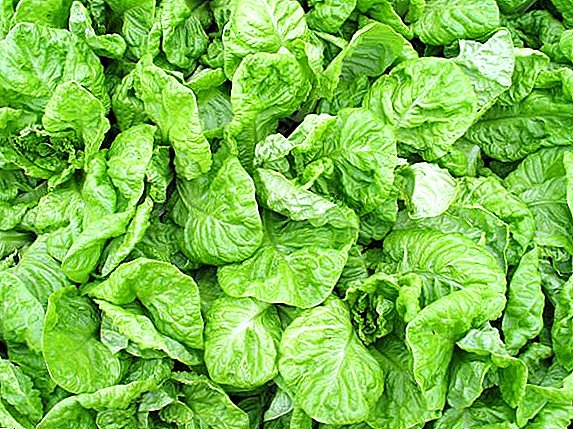 The culture of our food is gradually changing. Internet resources and multiple cooking shows on television offer to cook something new, unusual or even exotic, and the range of stores is also expanding rapidly. And here in the recipes and on the shelves of shops we sometimes see the greens of many varieties, which are still strange for our edges. About, what are different types of lettuce and similar crops, and what they eat with - later in the article.
The culture of our food is gradually changing. Internet resources and multiple cooking shows on television offer to cook something new, unusual or even exotic, and the range of stores is also expanding rapidly. And here in the recipes and on the shelves of shops we sometimes see the greens of many varieties, which are still strange for our edges. About, what are different types of lettuce and similar crops, and what they eat with - later in the article.
Lettuce
 Sowing campaign - a plant from the genus Latuk of the Astro family, most commonly referred to as simply lettuce or lettuce. Salad is cultivated and used for food throughout the world. Sometimes the word "lettuce" means only the usual leafy green lettuce, but this is not true. There are many classifications of lettuce. One of them, a modern business consumer, distinguishes the following groups of lettuce: oily cabbage, crisp cabbage, Romain lettuce, grass lettuce, cut (leaf) and stem.
Sowing campaign - a plant from the genus Latuk of the Astro family, most commonly referred to as simply lettuce or lettuce. Salad is cultivated and used for food throughout the world. Sometimes the word "lettuce" means only the usual leafy green lettuce, but this is not true. There are many classifications of lettuce. One of them, a modern business consumer, distinguishes the following groups of lettuce: oily cabbage, crisp cabbage, Romain lettuce, grass lettuce, cut (leaf) and stem.
Oak Salad (Oaklif)
 Oak-leaved lettuce, oak leaf lettuce or oaklif - leaf lettuce, the shape of the leaves of which resembles oak leaves. The plant forms a dense semi-sprawling outlet of medium or large size, the head is not formed. The leaves are green, red, maroon-brown color, which increases to the tips. They are pinnate, with a wavy edge and fan-shaped venation, very decorative. Oaklif - medium early variety, resistant to rifle and disease. Varieties of oak leaves: Altero, Amorix, Asterix, Betanto, Dubagold, Dubared, Maseratti, Torrero, Starix. The planting scheme of this salad is 30 x 30 cm. The salad does not tolerate temperature drops and is stored for a short time.
Oak-leaved lettuce, oak leaf lettuce or oaklif - leaf lettuce, the shape of the leaves of which resembles oak leaves. The plant forms a dense semi-sprawling outlet of medium or large size, the head is not formed. The leaves are green, red, maroon-brown color, which increases to the tips. They are pinnate, with a wavy edge and fan-shaped venation, very decorative. Oaklif - medium early variety, resistant to rifle and disease. Varieties of oak leaves: Altero, Amorix, Asterix, Betanto, Dubagold, Dubared, Maseratti, Torrero, Starix. The planting scheme of this salad is 30 x 30 cm. The salad does not tolerate temperature drops and is stored for a short time.
Oak lettuce has a nutty flavor, and is best combined with ingredients that do not have strongly pronounced flavors. Salad dressing with oak leaf should not be heavy and too spicy. Oaklif blends well with avocados, mushrooms, salmon, croutons, almonds, garlic. It can serve as a side dish for fried fish. Fill the dish better with vegetable oil with vinegar and salt. Beautiful "oak" leaves can also be used to decorate dishes.
Did you know? According to legend, the famous Provencal salad mixture Mesqulen was created in Nice by poor Franciscan monks. Having no funds for the whole beds, they planted many different greens in one row, and then distributed it to the congregation for alms. It consisted of salad chicory (radicchio, frieze and escariol), mung bean, dandelion, lettuce, oak leaf, purslane, arugula, watercress.
Lollo rosso
 Variety Lollo Rosso can rightly be called one of the most beautiful leafy salads. In their production, he ranks second after Batavia. It forms a semi-sprawling rosette with fan-shaped leaves of medium size. The tips of the leaves are very small and wavy, "curly", differ in bright anthocyanin color of red shades, green leaves closer to the center. For the similarity of lettuce with sea corals, Lollo Rosso is called "coral salad."
Variety Lollo Rosso can rightly be called one of the most beautiful leafy salads. In their production, he ranks second after Batavia. It forms a semi-sprawling rosette with fan-shaped leaves of medium size. The tips of the leaves are very small and wavy, "curly", differ in bright anthocyanin color of red shades, green leaves closer to the center. For the similarity of lettuce with sea corals, Lollo Rosso is called "coral salad."
This is an early ripe salad, the harvest of which can be harvested in 40-50 days after mass shoots. It can grow in an open and protected ground, cold-resistant, loves light and constant moisture. The salad planting scheme is 20 x 25 cm. Lollo Rosso is a decorative salad suitable for growing in flower beds next to flowers.
Salad has a nutty taste with bitterness. Most often, it performs a decorative function on a plate, decorating the dish. It is found in salad mixtures along with other varieties of salads. Good in combination with cheese, chicken liver, fried meat (pork, goose, turkey), baked vegetables, hot appetizers, salads. Popular in Italian cuisine, where it is combined with seafood. (shrimp and scallops) and spicy herbs (basil, thyme).
In addition to the variety of the same name, the variety also includes the following varieties: Carmesi, Constance, Majestic, Nika, Nation, Selvey, Revolution, Pentared, Refeta.
Did you know? Lollo Rosso is named after Italian actress Gina Lollobrigida for the similarity with her hairstyle that she wore in the 1960s.
Butterhead
 This is a very common lettuce with a delicate buttery texture and mild flavor. Butterhead's small head of cabbage consists of tender, pale green leaves of elongated shape, inside it is crisp, outside - with a bitterness. In one head there are about 250 g of leaves.
This is a very common lettuce with a delicate buttery texture and mild flavor. Butterhead's small head of cabbage consists of tender, pale green leaves of elongated shape, inside it is crisp, outside - with a bitterness. In one head there are about 250 g of leaves.
Butterhead salad (Boston) goes well with greens and other salads, its leaves are used to make burgers, decorating dishes. Leaves can be replaced by nori in cooking rolls. In Germany, this salad makes garnishes for hot meat dishes. An excellent salad dressing will be creamy sauce, honey, balsamic, olive oil.
Did you know? Translated from English, "butterhead" means "oily head."
Iceberg (ice salad)
 Iceberg variety salad (crispy, ice cold, ice salad) looks like cabbage. Its growing season is about 100 days. A loose head of lettuce has an average weight of 400-500 g, although it can reach 1 kg. A medium-sized or large-sized semi-sleek socket consists of solid and thick leaves with a corrugated edge. They are shiny, juicy and crispy, color green with a touch of white or gray. When harvesting, in addition to the head of cabbage, the surrounding leaves are also cut off. The planting pattern is 30 x 35 cm. This type is very resistant to low temperatures. In the refrigerator can be stored up to 20 days. Iceberg lettuce varieties: Argentina, Barcelona, Galera, Diamantinas, Helenas, Cartagenas, Kuala, Lagunas, Nanet, Santarinas, Platinas, Fioret.
Iceberg variety salad (crispy, ice cold, ice salad) looks like cabbage. Its growing season is about 100 days. A loose head of lettuce has an average weight of 400-500 g, although it can reach 1 kg. A medium-sized or large-sized semi-sleek socket consists of solid and thick leaves with a corrugated edge. They are shiny, juicy and crispy, color green with a touch of white or gray. When harvesting, in addition to the head of cabbage, the surrounding leaves are also cut off. The planting pattern is 30 x 35 cm. This type is very resistant to low temperatures. In the refrigerator can be stored up to 20 days. Iceberg lettuce varieties: Argentina, Barcelona, Galera, Diamantinas, Helenas, Cartagenas, Kuala, Lagunas, Nanet, Santarinas, Platinas, Fioret.
Iceberg is good in salads, hamburgers, successfully combined with meat, fish and seafood, eggs.
Did you know? The salad got its name in America: in order to preserve freshness longer, farmers sprinkled it with pieces of ice and delivered it this way. It looked like glacier fragments.
Batavia
 The Batavia variety is distinguished by a large medium dense head of cabbage and a large semi-sprawling rosette. Heading in cold conditions in varieties of this type is not always clearly defined. Batavia lettuce leaves are medium, thick, whole-cut, wavy on the edge, crispy. The predominant color of the leaves is light green, green, yellowish, red-brown. The salad has a sweetish, slightly grassy aftertaste.
The Batavia variety is distinguished by a large medium dense head of cabbage and a large semi-sprawling rosette. Heading in cold conditions in varieties of this type is not always clearly defined. Batavia lettuce leaves are medium, thick, whole-cut, wavy on the edge, crispy. The predominant color of the leaves is light green, green, yellowish, red-brown. The salad has a sweetish, slightly grassy aftertaste.
Grades: Afition, Bogemi, Grand Rapid Pearl Jam, Grini, Imagine, Lancelot, Lifel, Caipira, Kismi, Malis, Redbat, Risotto, Perel, Starfighter, Triat-lon, Fanley, Fantime. The planting scheme is 30 x 35 cm. Today, 90% of salads that are grown using the hydroponics method (in aqueous solution instead of soil) are of the Batavia variety type.
Batavia salad is well combined with fatty meat and walnuts. On the leaves you can serve meat, fish, vegetables, as well as they are suitable for sandwiches and salads.
Did you know? Batavia - originally the country of the ancient Germanic tribe of the Batavians, who lived in the territory of the modern Netherlands, later - the Latin name of Holland.
Romano (Roman salad)
 The oldest variety of romaine lettuce (romano, roman, kos salad) It is characterized by a loose half-open head weighing approximately 300 g. Socket is very dense, medium or large size. The leaves are elongated, solid, whole-cut, extended upwards. In many varieties, the top of the leaf is slightly bent inward. The outer sheets of roman lettuce are more green, in the middle - light green. Romano lettuce is suitable for cultivation both in the open and in the protected ground and even on the windowsill.
The oldest variety of romaine lettuce (romano, roman, kos salad) It is characterized by a loose half-open head weighing approximately 300 g. Socket is very dense, medium or large size. The leaves are elongated, solid, whole-cut, extended upwards. In many varieties, the top of the leaf is slightly bent inward. The outer sheets of roman lettuce are more green, in the middle - light green. Romano lettuce is suitable for cultivation both in the open and in the protected ground and even on the windowsill.
Varieties of roman lettuce: Wendel, Garnet Rose, Klau-Dius, Xanadu, Kosberg, Legend, Manavert, Remus, Paris White, Pinokio, Zimmaron.
The taste of Roman salad is sweet-nutty, tart, slightly spicy. Romain is a frequent ingredient in salads, sandwiches and hamburgers, it goes well with yogurt dressings, you can stew it and make mashed potatoes. Boiled romaine salad tastes like asparagus. May be stored in the refrigerator for several weeks.
Important! In the classic recipe for salad "Caesar" is exactly the Roman salad.
Other salad cultures
Often other cultures are called lettuce that do not belong to the Latuk genus, but have similar properties or appearance and are also used in cooking.
Corn (field salad)
 Valerianella (corn, field salad, rapunzel, mung bean salad) belongs to the honeysuckle family. The plant forms a rosette of oblong, whole, dark green or yellow-green leaves. Field salad can be grown up on the site together with other vegetables. The plant is grown by the conveyor method: sow the seeds in the soil every 2 weeks from spring to autumn to a depth of 1 cm, sowing scheme - 10 x 35 cm. The root likes a sunny location and frequent watering, with a lack of moisture blooms earlier.
Valerianella (corn, field salad, rapunzel, mung bean salad) belongs to the honeysuckle family. The plant forms a rosette of oblong, whole, dark green or yellow-green leaves. Field salad can be grown up on the site together with other vegetables. The plant is grown by the conveyor method: sow the seeds in the soil every 2 weeks from spring to autumn to a depth of 1 cm, sowing scheme - 10 x 35 cm. The root likes a sunny location and frequent watering, with a lack of moisture blooms earlier.
Harvesting the root can be a few weeks after the formation of 4 pairs of leaves. Mash-salad can be stored in the refrigerator in a plastic bag for up to two weeks.
Delicate sweet greens with a nutty note are added to vegetable salads and soups. Mush-lettuce is used to replace lettuce or spinach. It goes well with peanut, sesame and pumpkin seed oil. When roasted, the root acquires a creamy texture, while maintaining tartness. Corn leaves decorate sandwiches and snacks. Delicious salads with a root are obtained in combination with chicken, croutons, citrus, beetroot and apples. Field salad can be served as a side dish to meat and fish dishes, mushrooms.
Important! If the leaves of corngrass grow bitter, cover it from the light a few days before the harvest.
Watercress
 Watercress, or klopovnik, belongs to the cabbage family. This is an annual or biennial herb with a thin stem and small dissected leaves.
Watercress, or klopovnik, belongs to the cabbage family. This is an annual or biennial herb with a thin stem and small dissected leaves.
Most varieties of leaves are green, some - purple. The culture is suitable for cultivation on the site, and for the window sill: the seeds should be sown densely in a flower pot. Does not require special care, loves moisture, tolerates shade relatively well. Watercress varieties: News, Chill, Merezhivo.
It grows very quickly, after 2 weeks, when it reaches a height of 8-10 cm, it can be eaten. Crop harvested with scissors, you need to cut the amount that you plan to use as food. Watercress tastes a bit spicy, mustard, because it contains mustard oil. Fresh watercress can be used as a seasoning for salads, appetizers, omelets, meat, fish, in soups, dips, sauces. Delicious and beautiful turn out sandwiches with watercress.
Important! Watercress juice is suitable for gargling with laryngitis, and is also considered a cough aid.
Radiccio
 Radiccio (radicchio, italian chicory) - This is a type of chicory ordinary. The plant forms a head of red leaves with white veins.
Radiccio (radicchio, italian chicory) - This is a type of chicory ordinary. The plant forms a head of red leaves with white veins.
There are two types of radicchio: summer (sown in spring, harvest harvested in autumn) and winter (it is sowed in the summer, the harvest is collected in the spring). The leaves have a spicy bitter aftertaste. Winter radiccio has a nicer taste, softer. Grades: di Treviso, di Chioggia, di Castelfranco, di Verona, Treviano, Rosa di Gorica. The plant loves frequent shallow watering, with a lack of moisture the product is very bitter.
In Italian cuisine, red radicchio is usually prepared in grilled olive oil, added to risotto, pasta. Added in small portions to a mix of light varieties of radicchio mild salad softens its characteristic bitter taste. These salads are seasoned with sauces based on mayonnaise, honey, and juices. From the roasted and shredded roots of the plant they prepare a coffee drink.
Did you know? In order to enhance the brightness of the red color of the radicchio, Italian farmers cover their heads that have reached a certain size from sunlight or freeze.
Frize
 Behind the word "frieze" (frisee), there is a curly-headed (cut-leaf) endive, a type of salad chicory. The plant is ornamental, has curly leaves, almost white toward the center and light green or yellowish at the edges. Unlike other types of endive, the frieze leaves are thick and shaggy, and its taste is much milder.
Behind the word "frieze" (frisee), there is a curly-headed (cut-leaf) endive, a type of salad chicory. The plant is ornamental, has curly leaves, almost white toward the center and light green or yellowish at the edges. Unlike other types of endive, the frieze leaves are thick and shaggy, and its taste is much milder.
Culture stands out for its spicy bitterness, which is passed on to the dish. Salads, appetizers, dishes from vegetables, meat, fish - all this can be cooked using a frieze. It goes well with herbs and herbs (arugula, spinach, thyme), cheese, bacon, seafood, citrus. Grind greens need a ceramic knife or hands. It is necessary to season a salad with greens frize right before serving, for this purpose olive oil is best suited.
Important! During the ripening period, the frieze is tied so that sunlight does not get into the core. The leaves in the center will remain yellow and more tender.So different in shape, taste and color. salads and lettuce cultures have long been an indispensable product. Many of them are still unknown or inaccessible to us, but the interest in them is constantly increasing, and perhaps a foreign guest with the strange name Radchio or Oakliff will soon be on your table.


